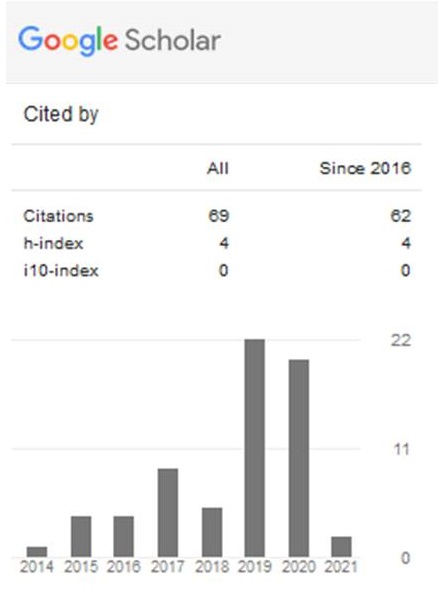Penentuan Nilai Electric Conductivity Index (Eci) Tanah Menggunakan Alat Ecimeter Sederhana, Studi Kasus-Kelurahan Lambuang Bukik, Padang
Abstract
Keywords
Full Text:
PDF (Bahasa Indonesia)References
Ahuja, L.R., K.K. Johnsen, dan G.C. Heathman,. 1995. Macropore transport of a surface applied bromide tracer:model evaluation and refinement. Soil Sci. Soc. Am. J. 59: 1234-124.
Aimrun W., Amin MSM., Rusnam M., Ahmad D., Hanafi mm., Anuar A.R. 2009. Bulk soil electical conductivity as an estimator of nutrients in the maize cultivated land. European Journal of Scientific Research. 31(1): 37-51.
Syarifudin, Amir. 2016. Perancangan dan realisasi alarm kabel jaringan local akses tembaga dengan notifikasi sms menggunakan microkontoler.Sripsi. Universitas Telkom.
Chaudari R.P., Ahire D.V., Chkravarty M., Maity S. 2014. Electrical conductivity as a tool for determining the physical properties of Indian soils. International Journal of Scientific and Research Publications. 4(4): 1-4.
Farahani, H.J., Buchleiter, G.W., Brodahl, M.K. 2005. Characteristic of apparent soil electrical conductivity variability in irrigated sandy and non saline field in Colorado. American Society of Agricultural Engineers. Vol. 48(1): 155-168.
Farah, A., Monteiro, M. C., Calado, V., Franca, A. S., and Trugo, L. C. 2006. Correlation between cup quality and chemical attributes of Brazilian coffee. Food Chemistry, 98(2), 373–380.
Grisso, R. D., Alley, M. M., Holshouser, D. L., and Thomason, W. E. (2014). Precision Farming Tools. Soil Electrical Conductivity. https://vtechworks.lib.vt.edu/handle/10919/51377. [11 Januari 2023].
Hermawan, B. 2005. Monitoring kadar air tanah melalui pengukuran sifat fisik dielektrik pada lahan jagung. Jurnal Ilmu Pertanian. 7(1): 15-22.
Lesch, S.M., Strauss D.J., Rhoades J.D. 1995. Spatial prediction of soil salinity using electromagnetic induction techniques. Water Resource Research. 31(2) : 373-386.
Lück, E., Gebbers, R., Ruehlmann, J.,and Spangenberg, U. (2009). Electrical conductivity mapping for precision farming. Near Surface Geophysics, 7(1),15–25.
Refbacks
- There are currently no refbacks.

_2017.jpg)



